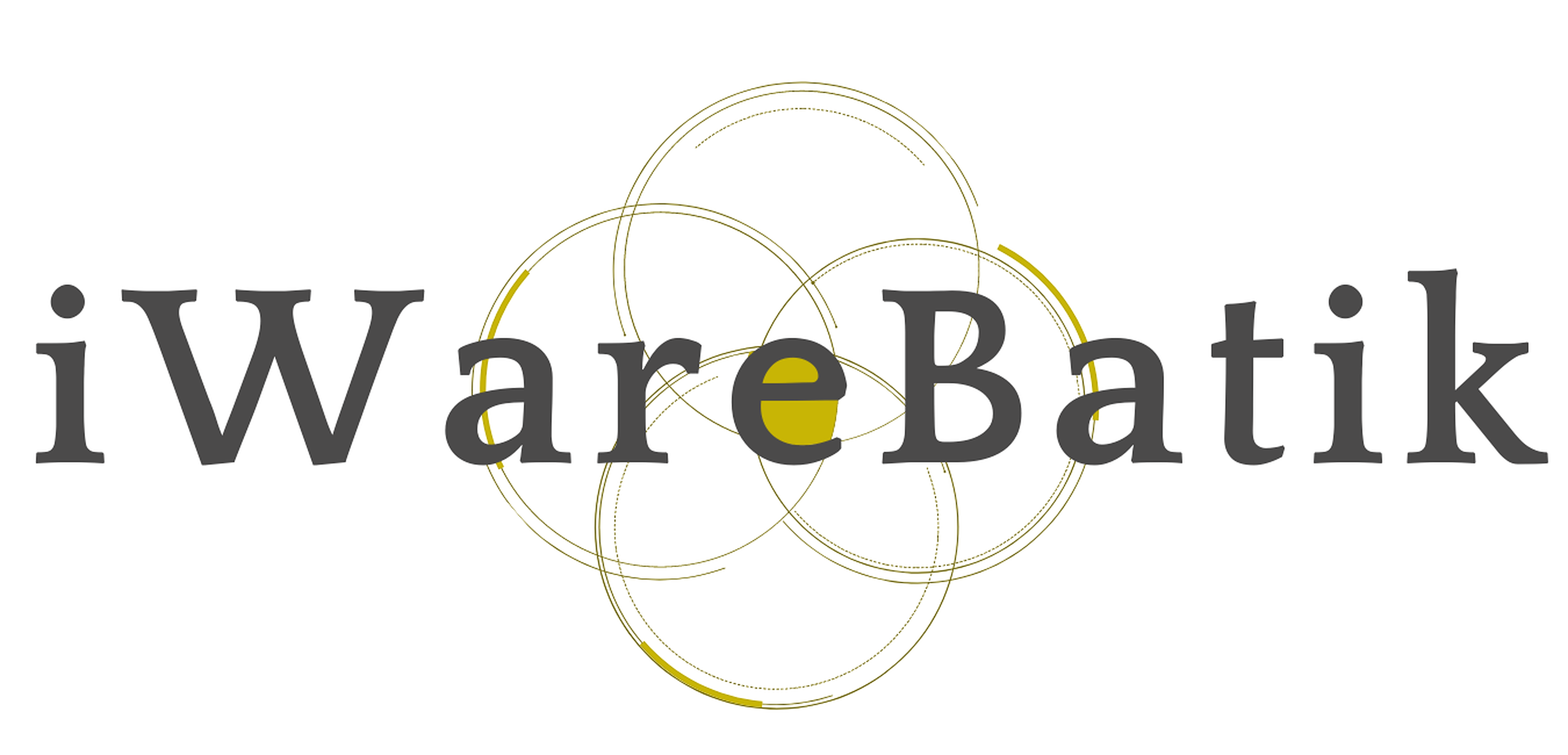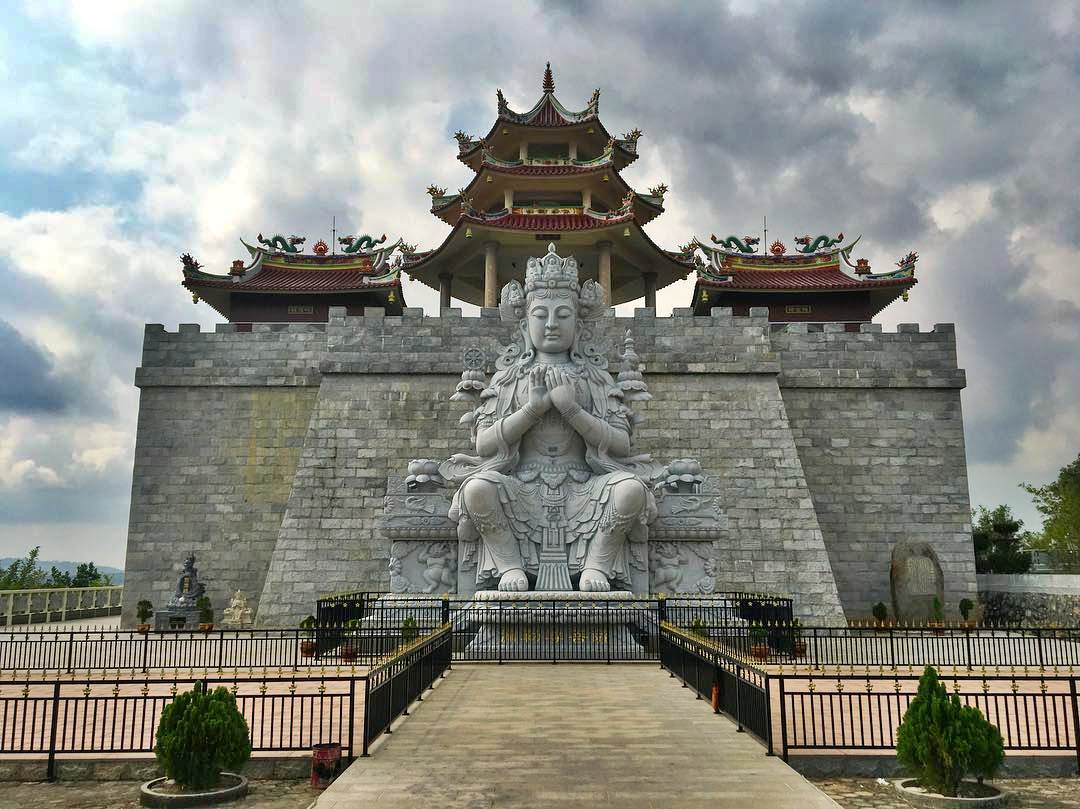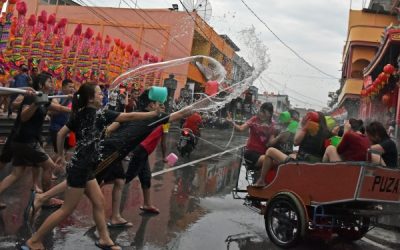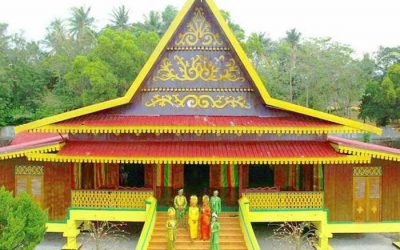Home / Batik Regions – Western Indonesia – Northern Sumatra – Riau Islands / Ksitigarbha Buddhist Shrine
Cultural Destination
Embrace the spirit of the place!
Ksitigarbha Buddhist Shrine
The Bodhisattva Ksitigarbha is known as the Buddhist shrine with a thousand faces. When you sneak peak to the inside part of the temple, there are 500 statues of Lohan with various faces and more than 40 human-like god statues carved based on Buddhist beliefs. The Bodhisattva Ksitigarbha Temple exists as one of the largest Buddhists temples in Southeast Asia after China. It is also regarded as a religious tourism destination in Tanjung Pinang City and Riau Islands Province.
Tourist Attractions in Riau Islands
Cian Cui Festival
Cian Cui Festival is originally an annual tradition of the Chinese descendants in
Daik Lingga Royal Palace
The wonder of the Riau – Lingga royal palace complex consists of
Bintan Trikora Beach
If you want to see a stunning view of granite beach, this place offers a great
Riau Islands
Batik Motifs
Gonggong Siput
Gonggong (Strombus Turturella) is one type of sea snail found around
Tikar Natuna
The Tikar Natuna motif is adapted from the traditional making of pandanus mats in
Ikan tambal
The word “Ikan” refers to fish. The philosophical meaning of Ikan Tambal means is
Gonggong Beruntun
This motif illustrates that a person should maintain a positive attitude and
Discover
Indonesian
Batik
Motifs
Desa Na Tolu
The Desa Na Tolu characteristic pattern symbolizes the Batak philosophy of existence and
Gedhog Kembang Waluh
a combination of Javanese cultural motif of the Majapahit kingdom (XII-XIV century) with
Jumputan Bintang
The word Jumputan means the tie-dye technique, while the word “Bintang” refers to
Tikar Natuna
The Tikar Natuna motif is adapted from the traditional making of pandanus mats in
Ukir Sentani
The Ukir motif is a batik motif that is inspired by various traditional Sentani wood carvings
Gonggong Siput
Gonggong (Strombus Turturella) is one type of sea snail found around
Buketan Bali
The Balinese bouquet (Buketan Bali) is a floral arrangement and the name is
Tampuk Manggis Sasirangan
The motif illustrates the philosophy of the mangosteen fruit, which is
Prada Papua
The word “Prada” in the Javanese-Indonesian dialect means a batik textile that
Bintik Tujuh
The Bintik Tujuh (Seven Dots) motif has 7 white spots and green color gradation as
Hiu Taliyasan
Indonesia is also home to the world’s largest fish, the whale shark (Rhincodon typus). Hiu Taliyasan refers to
Bale Lumbu
This motif signifies the welfare of the ancient Sasak society. Bale also symbolizes the
Ikan tambal
The word “Ikan” refers to fish. The philosophical meaning of Ikan Tambal means is
Besurek Rembulan
This batik illustrates praise for God who created the wonderful universe
Burung Bidadari
Bidadari birds are endemic birds in Halmahera. This motif represents an
Paqbarre Allo
The word “Barre” means round and “Allo” means the sunlight. This motif is interpreted as
Sandeq
Sandeq Boat is a symbol of the maritime importance of the West Sulawesi region. The greatness of
Raja Ampat
Raja Ampat motif represents the marine life at Raja Ampat archipelago in
Pucuk Rebung Riau
Pucuk Rebung symbolizes heart determination in achieving goals, good luck, and
Jupri Kembang Teh
Kembang Teh illustrates the tendrils of tea plants that grow in the highlands of
Gumin Tambun
Based on Hindu mythology, this motif symbolizes lucks, abundant wealth, and
Cengkeh
The clove flower motif is the main commodity of the Tolitoli Regency. This motif represents
Ake Patra
Ake is related to the divinity and the composition of the universe. It is a symbol of
Lontara
The Lontara script itself is a typical ancient script of Bugis and Makassar communities. History records that
Gorga Simeol-Meol
The Gorga Simeol-meol is a pattern of plant tendrils. it is regarded as a symbol of longevity and
Wirasat
Wirasat or divine inspiration is a gift from God. This inspiration is symbolized by
Sekomandi
Its philosophical meaning is the eternal union which refers to a saying “until death do us part”
Daun Lada Hitam
The black pepper motif represents the main commodity of Bangka Belitung
Taiganja
Taiganja is a precious gold pendant that shows the social status of the Kaili family. It is
Enggang Dayak
Local people beliefs that hornbills are an incarnation of the Commander of the Birds. It has supernatural
Karawo Pinang
Pinang refers to the Palm areca tree. This motif is considered as the original
Lipaq Sabe
Lipaq Saqbe contains a simple geometric classical motif with various flower decorations. This textile is
Rangkiang
The word “Rangkiang” refers to the rice granary in the Minangkabau language. It symbolizes
Awan Berarak
Awan Berarak is a combination of Dayak motifs and Malay patterns. The word ‘Awan Berarak’ means the
Pati-Pati Pinehiku
It symbolizes the hierarchy in society and the social status of the Mekongga
Tangerang Herang
Tangerang Herang motif is a symbol of Tangerang city. The Tangerang Herang batik motif consists of
Mahkota Siger
Siger is the crown of a noblewoman in ancient time. It is a symbol of femininity, strength, and
Daun Sirih
This motif illustrates betel leaves that are used by Lombok communities as traditional
Parang Seling
Parang Seling or “alternating daggers” is a royal batik motif. It is a feminine variant of
Singayaksa
The Singayaksa motif comes from the name of a place where Sultan Hasanuddin used to
Rumah Mamuju
the Batik motif illustrates the house of Mamuju King with the stairs, located on the left of the wooden stage house
Bekantan Pakis
This motif represents Pakis Haji (Polystichum setiferum), an endemic plant in
Tabir Tanjung
Tanjung flower is a type of Cherry tree flower, which is commonly found in
Insang Ikan
Insang refers to the gills of the fish. This is a typical pattern of Malay ethnic who inhabits
Manguni Minahasa
Manguni is identified as the symbol of the Minahasa people. Manguni is known as a
Pohon Hayat (Tree of Life)
The Batik motifs in Lampung are dominated by the acculturation of Buddhist and
Tanah Liek
The word “Tanah Liek” refers to clay in Minang language. It is also known as
Malinau Cultural Festival
You will witness a unique competition that might not be found other than in
Daun Simpor
This motif is inspired by the Simpor plant (Dillenia Suffruticosa) which is a typical
Honai
The Honai is inspired by the traditional house of the Papuan community living in
Bultiya
The word ‘Bultiya’ is an acronym of the three major tribes in North Kalimantan, namely
Salakanagara
Salakanagara batik motif illustrates the first kingdom in the Betawi land
Pala Salawaku
This motif illustrates the unique weapons of the Maluku region, namely
Gajah Way Kambas
The motif illustrates the Lampung’s natural reserve, the Way Kambas. it also symbolizes
Kerawang Tegak Aceh
The Vertical Upright (Kerawang Tegak) Motif symbolizes a person who has a strong
Srimanganti
The name of the Srimanganti motif is derived from Palace’s hallway that connects to
Dayak Taghol
Dayak Taghol has a distinctive style of four curved lines and small dots. This motif represents
Lok Baintan Floating Market
As you can imagine, the most authentic thing is that you can buy things and even
Kaganga Tanah Rejang
If Batik Besurek combines Arabic calligraphy motifs, then the Kaganga batik takes
Durian Pecah
Broken Durian motifs depict the foundation of faith. The second half signifies the mastery of
Tenun Bima
The motifs are adopted from Bima woven textile. This pattern has received a great
Wakatobi
It symbolizes the coastal beauty of the Wakatobi island and the symbol of Patra symbolizes
Sido Mulyo
Sidomulyo is one of the classical motifs, which is specifically used for the bride’s costume in
Biji Kopi
The coffee seeds motif illustrates the pride of local coffee specialities in
Pattimura
Pattimura is the name of an Indonesian hero who fought against colonialism in
Kain Cual
Cual textile tradition has existed since the 17th century. The word “Cual” refers to
Leuit Sijimat
This motif reflects the daily activities of the Baduy tribe in Banten. The main ornaments of batik motif consist of:
Tongkonan
Toraja’s traditional house is called Tongkonan. Tongkonan is a place for
Gamolan
This motif illustrates Gamolan, a bamboo musical instrument of Lampung that is
Teguh Bersatu
This batik motif shows the strength of the people of Kupang. It also represents a sense of
Keluak Daun Pakis
The word “Keluak” is a Minang language which means twisted or tangled. The Motif of
Tubo Kelapa
Coconut tree is a symbol of a good character and strong mentality. It illustrates the more success a person, the more




